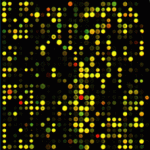Genomics
|
14 may 2015 13:51:38 |
| Identification of REST targets in the Xenopus tropicalis genome (BMC Genomics) |
|
Tweet Background:
A major role of REST (repressor element-1 silencing transcription factor) is to inhibit the expression of neuronal genes in neural stem cells and non-neuronal cells by binding to a 21 bp consensus sequence and recruiting epigenetic and regulatory cofactors to gene regulatory regions. In neural stem cells, REST silences differentiation-promoting genes to prevent their premature expression and is central to the regulation of neurogenesis and the balance of neural stem cells and neurons.
Results:
To understand the role of REST in vertebrate neurogenesis, we performed a genome-wide screen for REST targets in Xenopus tropicalis. We identified 742 neuron-restrictive silencer elements (NRSE) associated with 1396 genes that are enriched in neuronal function. Comparative analyses revealed that characteristics of NRSE motifs in frog are similar to those in mammals in terms of the distance to target genes, frequency of motifs and the repertoire of putative target genes. In addition, we identified four F-box ubiquitin ligases as putative REST targets and determined that they are expressed in neuronal tissues during Xenopus development.
Conclusion:
We identified a conserved core of putative target genes in human, mouse and frog that may be fundamental to REST function in vertebrates. We demonstrate that NRSE sites are associated with both protein-coding genes and lncRNAs in the human genome. Furthermore, we demonstrate that REST binding sites are abundant in low gene-occupancy regions of the human genome but this is not due to an increased association with non-coding RNAs. Our findings identify novel targets of REST and broaden the known mechanism of REST-mediated silencing in neurogenesis. |
| 71 viewsCategory: Genomics |
 Unravelling the complex trait of harvest index in rapeseed (Brassica napus L.) with association mapping (BMC Genomics) Unravelling the complex trait of harvest index in rapeseed (Brassica napus L.) with association mapping (BMC Genomics)Deep developmental transcriptome sequencing uncovers numerous new genes and enhances gene annotation in the sponge Amphimedon queenslandica (BMC Genomics) 
|
| blog comments powered by Disqus |
MyJournals.org
The latest issues of all your favorite science journals on one page
The latest issues of all your favorite science journals on one page



